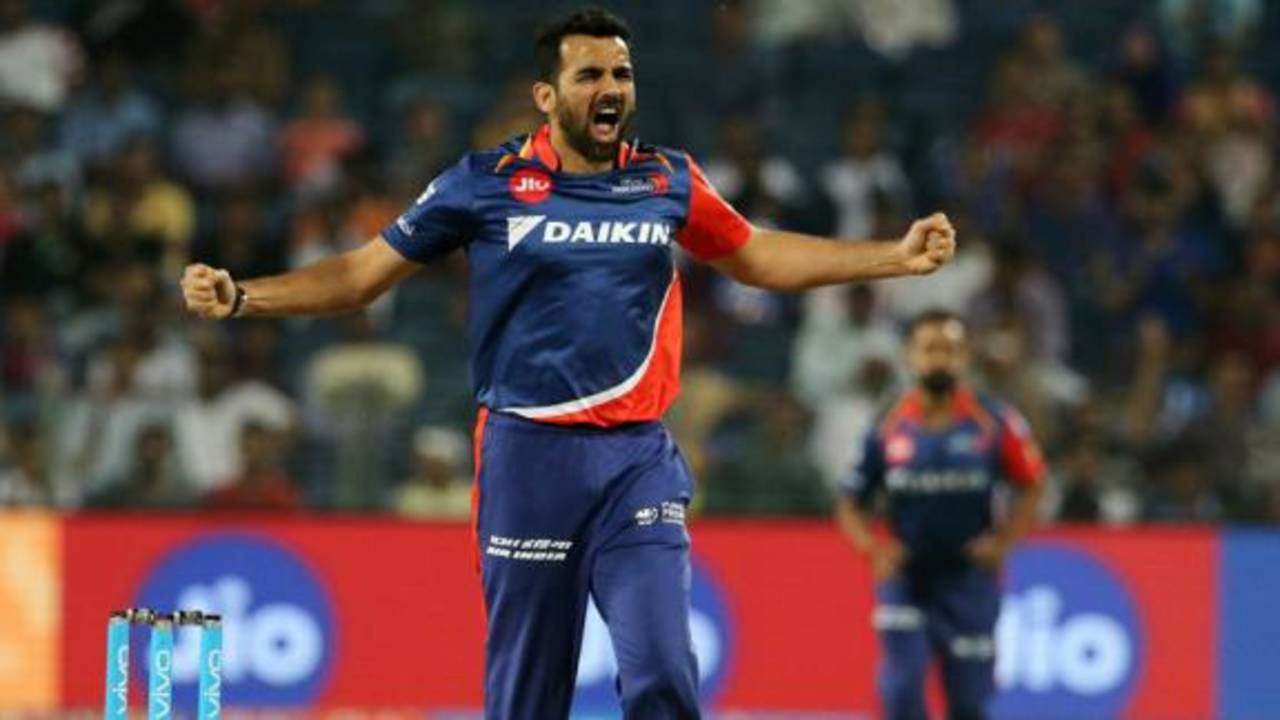Rising Pune still piecing together bowling puzzle
In terms of selection and the use of tactics - lack of spin in the Powerplay, and the chase - Rising Pune Supergiant seemed a few steps behind
In Rising Pune Supergiant's first game, Deepak Chahar opened the bowling with Ashok Dinda, and Adam Zampa and Imran Tahir were played as the overseas bowlers. In the second game, Dan Christian played in place of Deepak and, since one overseas bowler had to be replaced, Rahul Chahar came in for Zampa. On Tuesday against Delhi Daredevils, Rising Pune went back to the combination that worked somewhat in the first match. It's evident that bowling is their weak link, but their method of addressing it is interesting. They won the first match against Mumbai Indians, realised their bowlers had leaked too many and therefore changed two of them. In the second game, their batting let them down (they managed only 163 in Indore) but they went ahead to make two changes to their bowling department again. What's more surprising is that they've gone back to the combination that they thought did not work well enough in the first game to merit a consecutive match.
This change might have something to do with the West Indian's record against legspinners (44 runs off 39 balls and dismissed six times), given that Rising Pune have played two legspinners in all their games so far. But since Anderson hasn't bowled much in the last 12 months, that left Daredevils with only five bowling options. While they still boast of an effective bowling line-up, it doesn't take long for one of them to have a bad day. Unfortunately, there's no back-up for it. In this game, however, Daredevils got what they would have preferred: a chance to win by defending the target.
The pitch looked flat and Sanju Samson looked in supreme touch. The faster the ball came on to the bat, the faster it disappeared. Considering Rising Pune had both Tahir and Zampa, it was surprising that stand-in captain Ajinkya Rahane did not opt for either of them in the Powerplay when the runs were flowing. Also, in the eight games prior to this match, only two bowlers have bowled three overs in the Powerplay (Billy Stanlake and Sandeep Sharma). Thus, it was difficult to understand the logic behind giving Deepak Chahar the third over (last of the Powerplay) despite him having conceded 20 in his first two overs.
Whenever you see a T20 century, you find it going only one way. Rarely do you find an innings that started too aggressively, then slowed down too much before picking up again. Samson's 102 was one of those unique innings: in the first six overs, he scored 35 runs in 19 balls and scored only 13 in the following 19 balls after the fielding restrictions were lifted. It could have been tricky if he hadn't accelerated the way he did and if Morris had not scored 38 off nine balls. Daredevils went on to score 205 and comfortably won the game, too, but that was just about par for the course in these conditions.
While Rising Pune used only three bowlers in the Powerplay, Daredevils used four bowlers in the first four overs itself. Zaheer also ensured that two key bowlers--Morris and himself - finished the Powerplay. Even though Daredevils were defending 205, the bowling changes and field placements were dictated by the overwhelming goal of picking wickets. Since MS Dhoni got in earlier than expected, Zaheer used Shahbaz Nadeem, Cummins and even Anderson until the 11th over. Daredevils were hoping to keep Mishra away from Dhoni for as long as possible. Since it was impossible to keep Mishra out of the attack, his introduction was delayed, which, in turn, led to the asking rate climbing with every passing over.
Very early in the chase, the result was a foregone conclusion and that should have led to a slight change of tactics from Rising Pune. Instead of trying to hit every ball out of the park, they would have been better off batting the quota of 20 overs and scoring as many as possible. Big losses can dent the net run rate dramatically, which might hurt the team towards the latter half of the tournament. Rising Pune are looking one of the weakest teams in the IPL once again.
Aakash Chopra is the author of three books, the latest of which is The Insider: Decoding the craft of cricket. @cricketaakash
